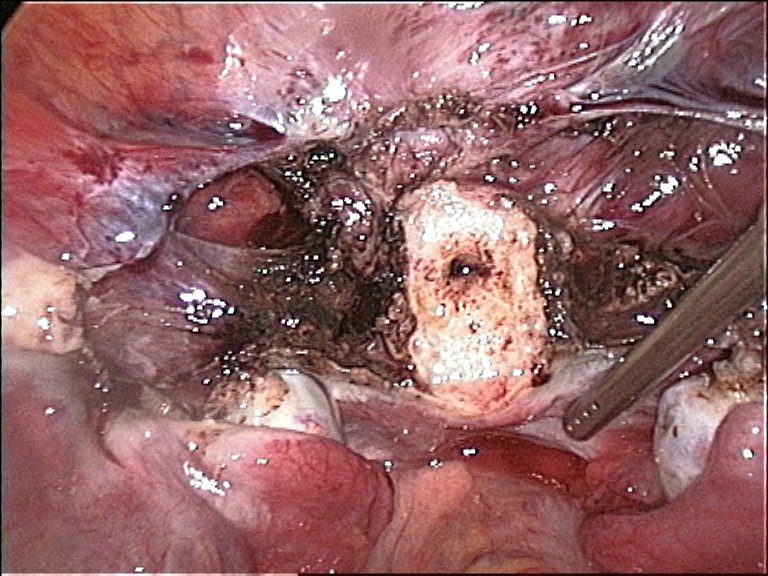Gynecological Surgery - Hysterectomy (The Removal of the Womb)
In contrast to western countries, hysterectomy holds significant cultural importance in Africa, as it is believed that a woman should experience childbirth naturally. Consequently, those who undergo this surgical procedure often face strained relationships with their in-laws. This cultural stigma surrounding not conceiving naturally has led many African women to feel uncomfortable discussing surrogacy as an alternative. While attitudes may change over time, the focus of this post is to shed light on hysterectomy.

Hysterectomy is a surgical procedure involving the removal of the uterus or womb in women. To clarify, males do not have a uterus. This procedure has been effective in treating conditions such as Adenomyosis, abnormal menstrual bleeding, Endometriosis, cancer in the uterus, and uterine prolapse., .
Before delving into the types of hysterectomy, let's briefly discuss the structure of the uterus. It connects to the vagina through the cervix, followed by the fundus which is the endor upper part of the uterus. The uterus is supported by the broad ligaments and round ligaments, while the uterine tube is located close to the ovary.

With that said, let's discuss the types of hysterectomy we have. The first I will be discussing is the partial or subtotal hysterectomy which has to do with the removal of the uterine body, leaving the cervix, the upper part of the vagina, the uterine tube, the ovary, and the supporting and connective tissues. According to some literatures, the cervix is left because it help regain bladder control and sexual function, but some do not really see any reason for not removing it., , , ,
Just as you would expect that since we have a partial hysterectomy, we would have a total hysterectomy. In the total hysterectomy, the body and cervix of the uterus alone is removed. Other part of the uterus is left such as the uterine tube, the ovary, and the upper part of the vagina. This procedure is usually done for patients with fibroid, uterine cancer, endometriosis, and cervical cancer.,

Another type of hystorectomy that you might have heard is Radical Hysterectomy which has to do with the removal of so many part of the uterus. The body, the cervix, the upper part of the vagina, the surrounding and connective tissues of the uterus would be removed, as well as the lymph node will also be removed. It can be used to treat cancer, fibroid, and endometriosis., ,
When it comes to removal of the ovary and the uterine tube, it doesn't have to do with hysterectomy. The removal of the uterine tube is Salpingectomy, and ovary removal is done in Oophorectomy. When the ovary is removed in patients, then the patients would have to depend life-long on hormones as the hormones are affected.
While I have discussed the different type of hysterectomy procedures, I should discuss about the techniques used. The first one I will be discussing is the Vaginal hysterectomy where the patient is placed in a lithotomy position, and the procedure would be carried out. This is less invasive and regarded as safer than more invasive techniques. Another technique is the abdominal hysterectomy which has to do with an invasive removal of the uterus. This is similar to having a C-section and cut into the abdomen can either be vertical or horizontal depending on the type of hysterectomy, or in cases where an oophorectomy is also done.
Another hystorectomy is the Laparoscopic hysterectomy where a small inscision is made, and the procedure is done via a monitor screen with the help of a robot or manually. To enable the surgeons have space to perform the surgery, carbon dioxide gas is introduced into the abdominal carvity creating a pneumoperitoneum, lifting the abdominal wall from the intestine. ,
While hysterectomy can be effective in treating various conditions, it is essential to discuss all available treatment options with your doctor before proceeding with the procedure. As with any surgical intervention, complications may arise, such as abdominal adhesions. Open communication with your healthcare provider is crucial to making informed decisions about your health.
The way Nigerian families take delayed birth, or inability to give birth is very disturbing, less hearing that a woman has her womb removed. You see if it is a medical condition that leads to the removal, a lot of people would not still understand because of the way our culture puts women and child birth.
Thanks for your contribution to the STEMsocial community. Feel free to join us on discord to get to know the rest of us!
Please consider delegating to the @stemsocial account (85% of the curation rewards are returned).
Thanks for including @stemsocial as a beneficiary, which gives you stronger support.